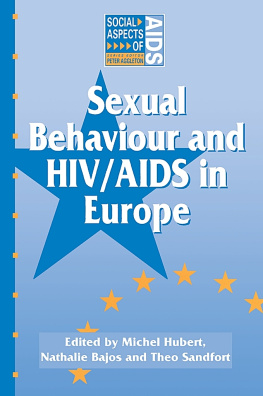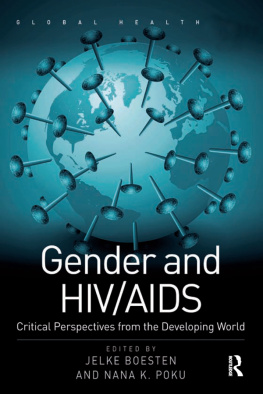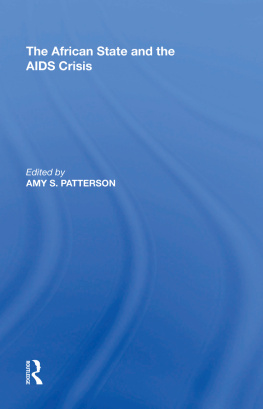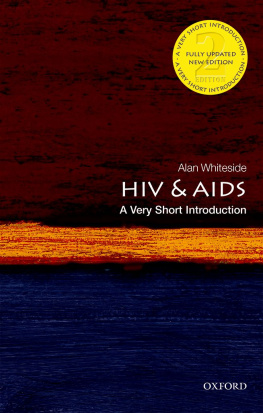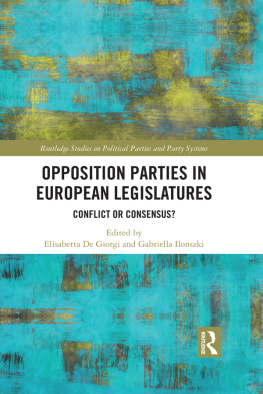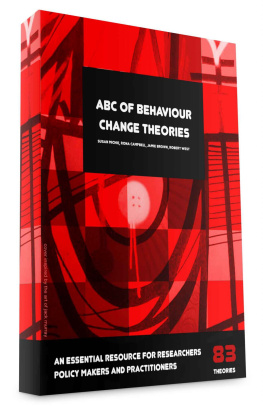Social Aspects of AIDS
Series Editor: Peter Aggleton
Institute of Education, University of London
Editorial Advisory Board
Dominic Abrams, University of Kent at Canterbury, UK
Dennis Altman, La Trobe University, Australia
Maxine Ankrah, Makerere University, Uganda
Mildred Blaxter, University of East Anglia, UK
Manuel Carballo, Nyon, Switzerland
Judith Cohen, University of California, San Francisco, USA
Anthony Coxon, University of Essex, UK
Peter Davies, University of Portsmouth, UK
Gary Dowsett, La Trobe University, Australia
Jan Grover, Oakland, California, USA
Graham Hart, MRC Medical Sociology Unit, Glasgow, UK
Mukesh Kapila, Department of International Development, UK
Hans Moerkerk, Ministry of Foreign Affairs, The Hague, The Netherlands
Cindy Patton, Temple University, USA
Diane Richardson, University of Sheffield, UK
Werasit Sittitrai, UNAIDS, Geneva, Switzerland
Ron Stall, University of California, San Francisco, USA
Robert Tielman, Utrecht, The Netherlands
Simon Watney, London, UK
Jeffrey Weeks, South Bank University, UK

Selection and editorial material copyright of Michael Hubert, Nathalie Bajos and Theo Sandfort 1998
This book is copyright under the Berne Convention.
No reproduction without permission.
All rights reserved.
First published in 1998 by UCL Press
Reprinted 2003 by Routledge
11 New Fetter Lane
London, EC4P 4EE
Routledge is an imprint of the
Taylor & Francis Group
British Library Cataloguing in Publication Data
A catalogue record for this book is available from the British Library.
Library of Congress Cataloguing-in-Publication Data are available.
ISBNs:
1-85728-818-1 HB
1-85728-819-X PB
eISBN 978-1-13535-9-676
Typeset in 10/12pt Baskerville by Best-set Typesetter Ltd, Hong Kong..
Printed and bound by Antony Rowe Ltd, Eastbourne.


Table 4.1 Questions about frequency of sex and (sub-) samples addressed in various surveys, with original and constructed categories
screening




The aim of this volume is to present cross-national analyses of key data on sexual behaviour and attitudes towards HIV/AIDS from 16 population surveys carried out in 11 European countries between 1989 and 1993. It is the second book to come out of a European Concerted Action on sexual behaviour and the risks of HIV infection supported by the EU Biomedical and Health Research Programme (BIOMED). The first volume, Sexual Interactions and HIV Risk (L. Van Campenhoudt, M. Cohen, G. Guizzardi and D. Hausser, Eds), published in 1997 in this same series examined new conceptual perspectives for understanding risk behaviour.
In order to understand how the authors were able to bring together such a large diversity of survey contents and methods and performed their cross-national analyses, the reader should start with the first chapter of this book, which also presents the main characteristics of the surveys under comparison. The different contributions are then divided into four parts. The first part provides basic information on sexual behaviour in Europe in the era of AIDS. Whereas AIDS provides the context rather than the focus of analysis in this first section, Part 2 is primarily epidemiological and is devoted to the measurement of exposure to sexual transmission of HIV using survey data. Part 3 focuses on preventive practices and the normative context that surrounds them. Finally, Part 4 discusses the specific issues of knowledge and representations of HIV/AIDS and their relation to discrimination against people with HIV/AIDS. The book closes with a chapter that summarizes some of the findings and brings together some of the lessons for HIV/AIDS prevention and future research that may be drawn from the various comparative analyses.
Designing, processing and publishing such comparative analyses was a long-running project that started in 1991. Three main stages were needed to develop the analyses described in this book. First, the objectives, tasks and working procedures for the project were determined by the Centre dtudes sociologiques (CES) of the Brussels-based Facultes universitaires Saint-Louis, which coordinated this project, aided by a steering committee. Then, the investigators who carried out the different surveys were asked to act as data providers and/or authors to design and process cross-national analyses. They were helped in these tasks by the CES, which provided them with all the necessary information about the surveys and survey questions and served as a hub for data exchange. Writing and editing the chapters was the final phase, during which the book was shaped to a standardized and consistent format. This does not mean, however, that differences in styles and scopes of analyses do not remain among the various chapters, or that additional cross-national analyses are not still possible.
Although we were conscious of the enormous challenge we had set ourselves from the very outset, the undertaking has gone well beyond what we expected and represented many more working hours than an average collectively written book. But we believe that this work was a necessary step in creating a community of researchers exploring sexual behaviour and attitudes to HIV/AIDS in Europe, and think it makes an important contribution to building up the empirical knowledge that is needed not only for HIV/AIDS prevention and epidemiology but also for other sexual health problems (STDs, abortion, and so on). We thus warmly thank all those who were engaged in this adventure. The following list of names is a way of acknowledging their work, but also gives the reader an idea of the many tasks that were necessary to realize this project.
First of all, we should like to thank the individual authors who worked with us and will hopefully enjoy the outcome. They include sociologists, psychologists, demographers, epidemiologists and medical doctors all involved with national surveys. We are particularly grateful to Jacques Marquet, who contributed to the writing of several chapters of the book. We should also like to thank Osmo Kontula, who wrote a chapter on attitudes towards sexual norms that unfortunately could not be included for lack of comparable data.
Not all those who contributed to this project actually participated in writing the various chapters. Several survey investigators, namely, Gerhard Christiansen, Meni Malliori, Dario Paez, Joo Santos Lucas and Ricardo Usieto, agreed to provide their data without being included as authors. Several data analysts did the same. Our gratitude goes to them, particularly to Jean-Claude Deheneffe, who took charge of the analyses that were to be made in Brussels on several data files and provided comparative tables of the common variables created in all the data files to serve as independent variables throughout the book. Philippe Huynen performed analyses of several data files too, as did Ernest de Vroome. Osma Ahvenlapi, Ioseba Iraurgi, George Koulierakis, Ann Petruckevitch, Stefano Campostrini and Reiner Trometer analyzed their own national data for us.
Next page
